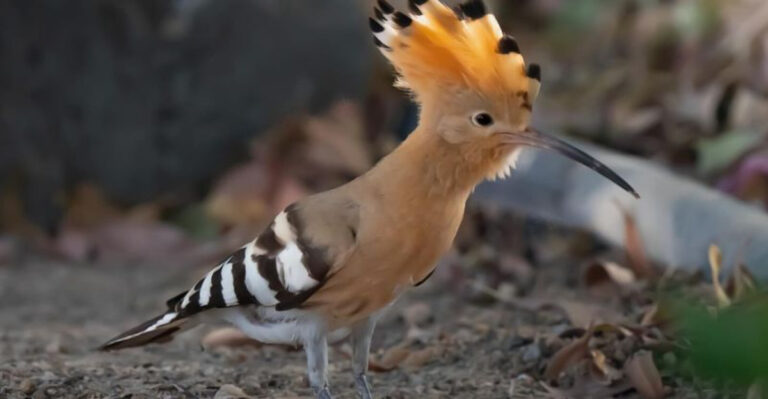17 Facts About How Cats’ Brains Work

Cats are fascinating creatures with minds that operate in intriguing ways. Their brains, though small, pack a punch when it comes to understanding their world and interacting with humans. This article provides you with some captivating facts about how cats’ brains function.
1. Size And Complexity
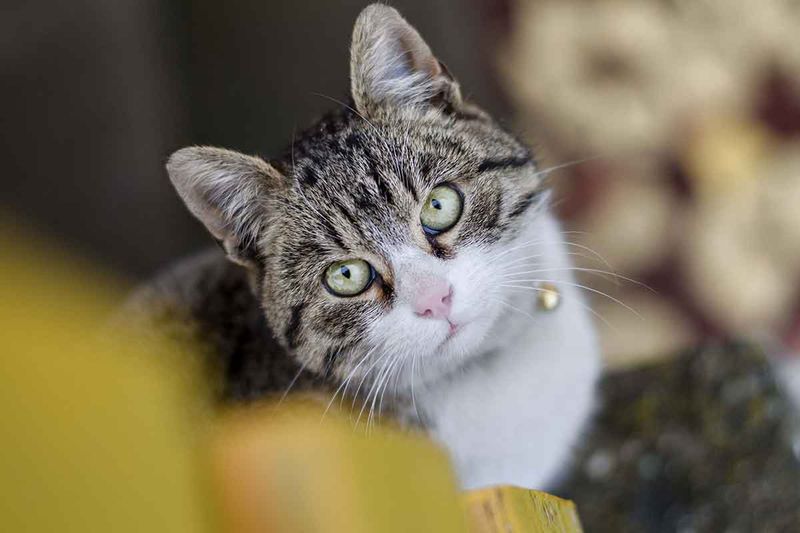
When considering how cats function, their brains play a pivotal role. Despite being smaller in size compared to humans, a cat’s brain is incredibly complex, comprising about 0.9% of their total body mass. This may seem minimal, but the complexity of the feline brain is akin to that of humans.
The cerebral cortex, responsible for decision-making, problem-solving, and memory, is densely packed with neurons, approximately 300 million. Cats have a highly developed cerebral cortex compared to other domestic animals, which explains their problem-solving capabilities and heightened senses.
Interestingly, the structure of a cat’s brain bears a 90% similarity to humans. This intriguing fact underscores the intelligence and emotional depth that cats possess, allowing them to form complex social relationships.
The sophisticated architecture of their brains aids in processing information quickly and efficiently, adapting to their ever-changing environments. Such intricate design is what makes cats both mysterious and endearing companions.
2. Memory Power
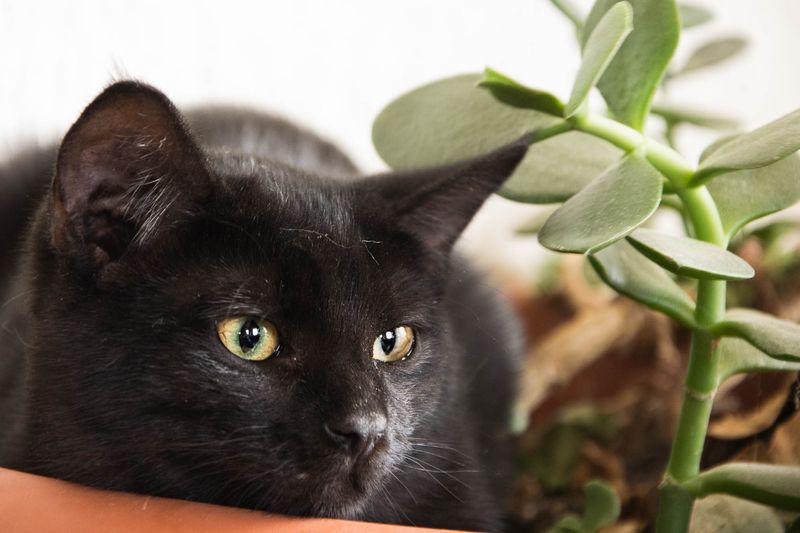
Memory in cats is a fascinating topic, as it plays a crucial role in their behavior and interaction with the environment. Cats have both short-term and long-term memory, enabling them to remember experiences and learn from them.
Short-term memory in felines is relatively brief, lasting about 16 hours, but this is long enough for them to retain necessary information to navigate their surroundings effectively.
Meanwhile, their long-term memory is more profound and can last for years, allowing them to recall individuals, both human and feline, with whom they have had significant interactions.
This capability is particularly evident in their ability to remember and recognize their owners, even after extended periods apart. The strength of a cat’s memory contributes to their learning process, helping them avoid past mistakes and develop complex hunting strategies.
Cats’ memories can be emotionally driven, meaning they remember experiences that have strong emotional significance, aiding in their survival and enhancing their relationship with humans.
3. Emotional Awareness
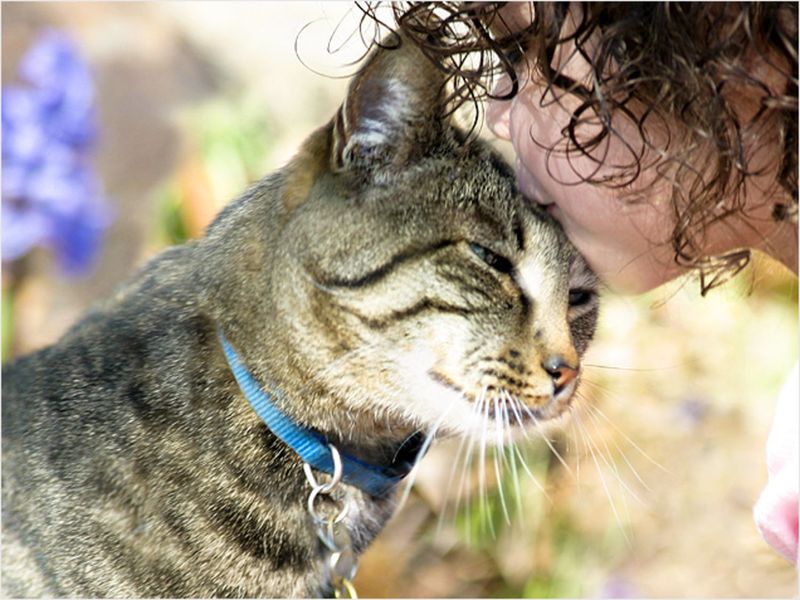
Emotions in cats are more profound than one might initially assume. While they may not express feelings in the same way as humans, cats are indeed emotionally aware. They possess the ability to perceive and respond to human emotions, often mirroring the mood of their owners.
A cat’s brain processes emotional stimuli, allowing them to exhibit empathy toward their human companions. For instance, when an owner feels sad, a cat may respond by being more affectionate, offering comfort in its unique way.
This empathic behavior can be attributed to the limbic system in a cat’s brain, which is responsible for emotional regulation. The emotional awareness in cats also plays a significant role in their social structures and interactions with other animals.
Cats often use body language and vocalizations to communicate their emotional state, showcasing a sophisticated understanding of social cues. This emotional intelligence not only endears them to humans but also aids in their survival, allowing them to navigate complex social environments.
4. Sensory Integration
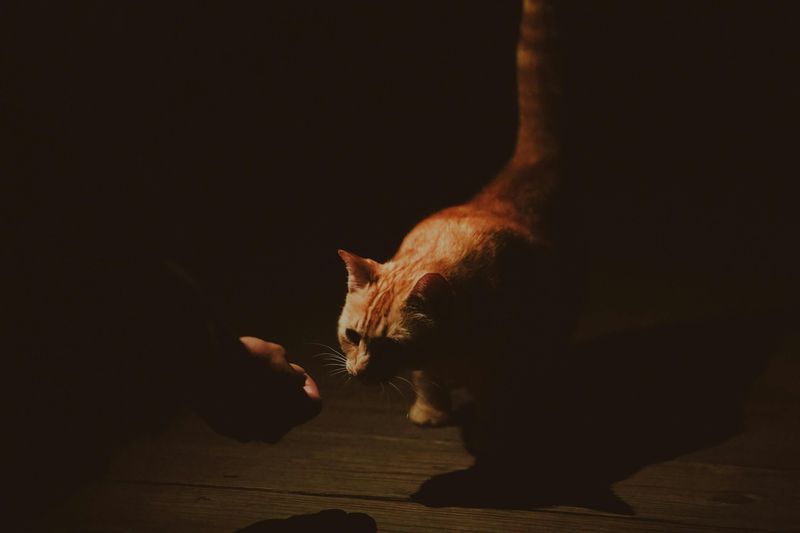
Sensory integration is a crucial aspect of a cat’s interaction with its surroundings. Cats possess extraordinary sensory capabilities that are expertly integrated in their brains. Their acute senses of sight, smell, and hearing allow them to process various stimuli efficiently.
The feline brain can simultaneously handle multiple sensory inputs, ensuring swift and accurate responses to environmental changes. For instance, a cat’s auditory cortex is highly developed, allowing them to detect sounds that are inaudible to humans, such as the high-pitched squeaks of a mouse.
Similarly, their visual acuity is remarkable, with a unique ability to see in low-light conditions, thanks to a layer of tissue in their eyes called the tapetum lucidum. This sensory prowess is vital for hunting and self-preservation, enabling cats to be effective predators.
Additionally, their whiskers are highly sensitive, helping them gauge spaces and detect subtle changes in their environment, showcasing the sophisticated sensory integration managed by their brains.
5. Play And Learning

Playing is not just an enjoyable pastime for cats; it’s a critical component of learning and development. The feline brain is hardwired to learn through play, which is evident from the moment they are kittens.
Playtime allows cats to practice their hunting skills, refine their motor functions, and develop social bonds with other cats and humans.
This behavior is not merely instinctual; it is a complex brain function that enhances their cognitive abilities. Play stimulates the brain, promoting the development of neural connections that are crucial for learning.
Moreover, interactive play with humans strengthens the bond between cat and owner, fostering trust and understanding. The adaptive nature of play in cats demonstrates their intelligence and ability to learn and adapt to new situations.
This form of learning is essential for their survival, as it prepares them for real-life scenarios, ensuring they can navigate their environment with confidence and precision.
6. Hunting Instincts
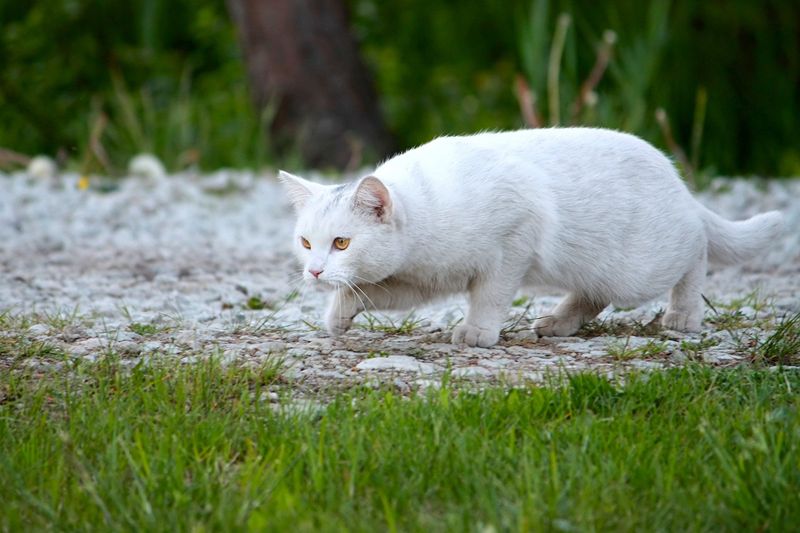
Hunting instincts are deeply ingrained in the feline brain, a testament to their predatory ancestry. Cats are natural hunters, and their brains are finely tuned to support this instinct. The hunting process involves a series of complex neurological signals that govern their ability to stalk, pounce, and capture prey.
A cat’s brain processes a wealth of information concerning movement, sound, and scent, enabling them to execute precise hunting strategies. This intricate coordination of senses is supported by a highly developed motor cortex, allowing for meticulous control of their muscles during a hunt.
The thrill of the chase is not merely for sustenance; it is a form of mental stimulation and exercise. Even domesticated cats exhibit these hunting behaviors, often seen in their playful antics with toys.
The brain’s ability to process and act on these hunting impulses highlights the evolutionary significance of their neural architecture, ensuring cats remain adept hunters in any environment.
7. Social Structure
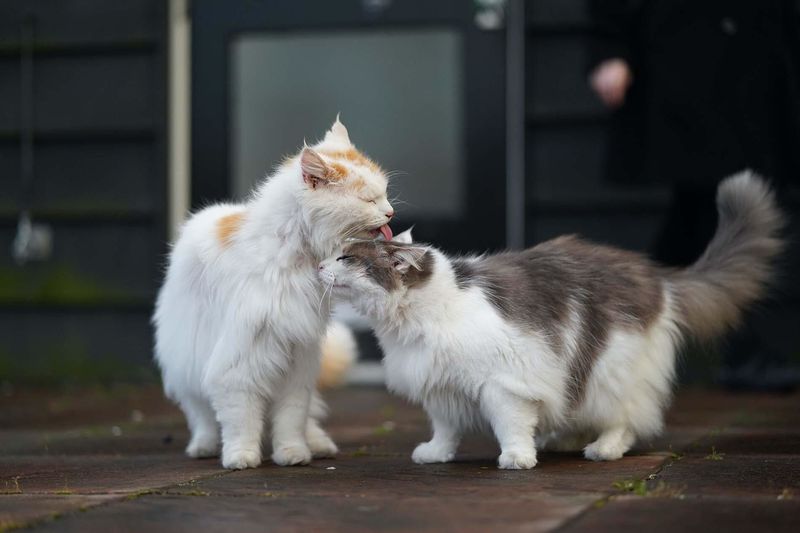
Social interactions in cats are governed by an intricate neural framework that dictates their behavior in groups. Unlike solitary creatures, domestic cats have a social structure that is both complex and adaptable. The feline brain plays a central role in managing these social interactions, enabling them to form hierarchies and establish territories.
Cats communicate using a combination of body language, vocalizations, and scent markings, allowing them to convey their status and intentions to other cats. The brain’s ability to process these social cues is essential for maintaining harmony within a group, minimizing conflicts and promoting cooperation.
Additionally, the social intelligence of cats is reflected in their relationships with humans. Cats are capable of forming deep bonds with their owners, often viewing them as part of their social group.
The neural mechanisms that facilitate these social behaviors underscore the adaptability and intelligence of cats, allowing them to thrive in both solitary and communal settings.
8. Problem-Solving Abilities

Problem-solving is a distinctive trait of feline intelligence, revealing much about their cognitive capabilities. Cats possess remarkable problem-solving abilities, often surprising their owners with their ingenuity. The feline brain is adept at analyzing complex situations and devising solutions, reflecting a high level of cognitive function.
This ability is particularly evident when cats are faced with challenges, such as opening doors, navigating obstacles, or manipulating objects to achieve a desired outcome. Their problem-solving skills are a testament to their adaptability, allowing them to thrive in diverse environments.
The cerebral cortex, where higher-order processing occurs, plays a crucial role in these cognitive functions, processing information and experiences to guide decision-making.
Cats often learn from their experiences, using trial and error to refine their problem-solving strategies. This aspect of their intelligence not only demonstrates their mental acuity but also enhances their interaction with their environment, making them fascinating companions.
9. Adaptability To Change

Adaptability is a hallmark of feline behavior, with the brain playing a vital role in facilitating this trait. Cats are known for their ability to adjust to new situations and environments with relative ease. This adaptability is rooted in their neural architecture, which allows them to process changes and modify their behavior accordingly.
The feline brain is equipped to handle stress and uncertainty, often displaying remarkable resilience in the face of change. This is particularly evident when cats move to new homes or when there are significant alterations in their routine. The ability to adapt is essential for their survival, enabling them to thrive in a variety of conditions.
Moreover, adaptability in cats is not limited to physical environments. They also adjust their social behaviors when interacting with different animals and humans. This flexibility is a testament to their intelligence, highlighting the sophisticated neural mechanisms that drive their behavior, ensuring their well-being in constantly changing surroundings.
10. Communication Skills
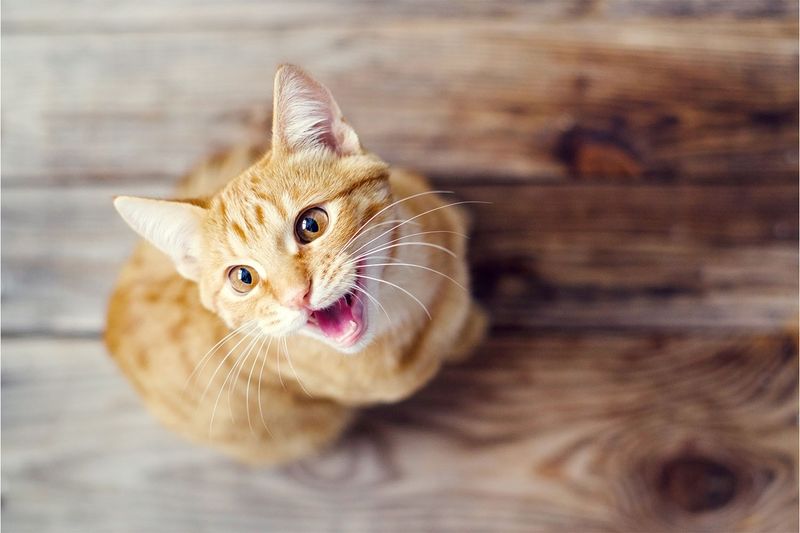
Communication in cats is a multifaceted phenomenon, involving a combination of vocalizations, body language, and visual cues. The feline brain is adept at processing and executing these complex communication strategies, allowing them to convey a wide range of emotions and intentions.
Cats use meows, purrs, and hisses to communicate with humans and other animals, each sound serving a specific purpose. The brain’s involvement in these vocalizations highlights the cognitive complexity of cats, enabling them to modify their communication based on context and audience.
Body language is another crucial aspect, with tail movements, ear positions, and eye contact conveying subtle messages that are easily interpreted by those familiar with feline behavior.
This sophisticated communication system is a testament to their social intelligence, allowing cats to navigate interactions with humans and other animals effectively. The neural mechanisms underpinning these skills ensure that cats remain engaging and expressive companions.
11. Spatial Awareness

Spatial awareness is a crucial aspect of a cat’s interaction with its environment, heavily reliant on their brain’s processing capabilities. Cats possess an innate ability to navigate complex spaces, an evolutionary trait honed by their predatory nature.
The feline brain is finely tuned to assess spatial information, allowing them to move with grace and precision.
This ability is primarily supported by their whiskers, which act as sensitive tactile sensors. These whiskers provide valuable feedback about their surroundings, enabling them to gauge distances and detect obstacles with ease. The brain processes this sensory input, allowing cats to make split-second decisions about their movements.
Spatial awareness is not only vital for hunting but also for everyday activities, such as climbing, jumping, and exploring. This skill ensures that cats can traverse their environment safely and efficiently, showcasing the intricate neural mechanisms that underpin their spatial cognition. The seamless integration of sensory information and motor control underscores the elegance of feline navigation.
12. Emotional Memory
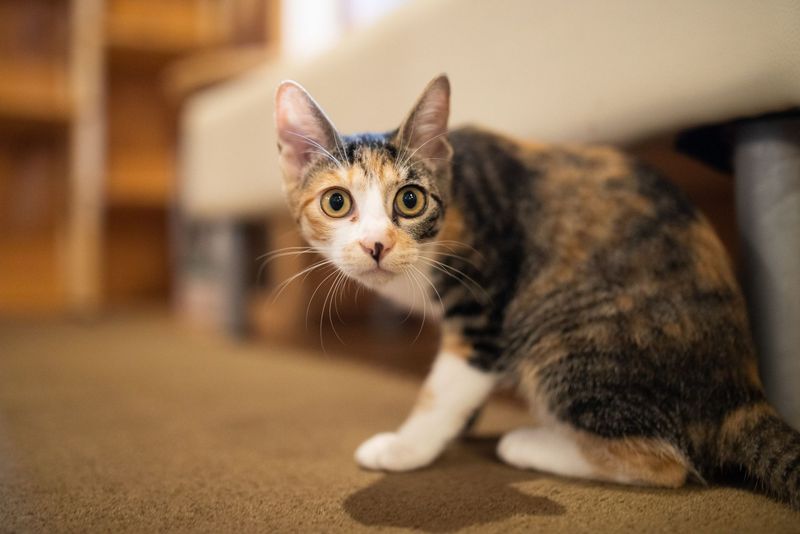
Emotional memory in cats is a fascinating aspect of their cognitive abilities, involving the brain’s capacity to store and recall emotionally charged experiences. Cats, much like humans, have the ability to remember events that evoked strong emotions, whether positive or negative.
This type of memory plays a significant role in shaping their behavior and interactions with their environment. Emotional memories are stored in the amygdala, a part of the brain responsible for processing emotions.
Cats may remember a comforting experience with their owner or a frightening encounter with another animal, influencing their future responses to similar situations.
These memories contribute to their overall emotional intelligence, allowing them to navigate their world with greater insight and understanding.
The ability to recall emotional experiences enhances their social interactions, helping them form bonds and avoid potential threats. This emotional memory is a testament to the complexity of the feline brain, highlighting their capacity for emotional depth and empathy.
13. Territorial Behavior
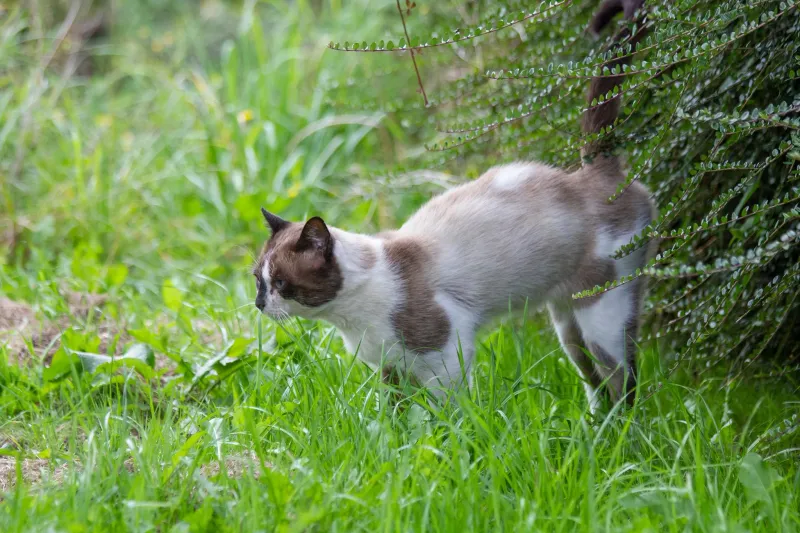
Territorial behavior in cats is a deeply ingrained aspect of their nature, guided by the brain’s processing of spatial and social information. Cats are known for their strong territorial instincts, often marking their domain with scent markings and visual signals. The feline brain facilitates this behavior by processing environmental cues and determining the boundaries of their territory.
Scent marking is a primary method of establishing territory, with cats using their facial glands to deposit pheromones on objects. This behavior is not only a means of communication with other cats but also a way to create a sense of security within their environment.
The brain’s role in this behavior underscores the importance of territory for a cat’s well-being, providing them with a familiar and controlled space.
Territorial instincts are particularly evident in multi-cat households, where the brain’s ability to navigate social structures and maintain harmony is critical. This territorial behavior is a complex interplay of neural and social factors, highlighting the sophistication of feline cognition.
14. Sensitivity To Environment

Sensitivity to environmental changes is a hallmark of feline behavior, with the brain playing a crucial role in processing these changes. Cats are highly attuned to their surroundings, often noticing even the slightest alterations in their environment. This sensitivity is rooted in their evolutionary history as solitary hunters, where acute awareness was essential for survival.
The feline brain is adept at processing sensory inputs, allowing for rapid adaptation to new situations. Cats may react to changes such as new furniture or unfamiliar scents, exhibiting curiosity or caution.
This sensitivity is not limited to physical changes; cats are also responsive to emotional shifts in their environment, often mirroring the mood of their human companions.
The brain’s ability to integrate sensory and emotional information enables cats to navigate their world with ease, ensuring their safety and well-being. This sensitivity, while sometimes misunderstood as aloofness, is a testament to the complex neural mechanisms that drive feline behavior, emphasizing their adaptability and resilience.
15. Visual Perception
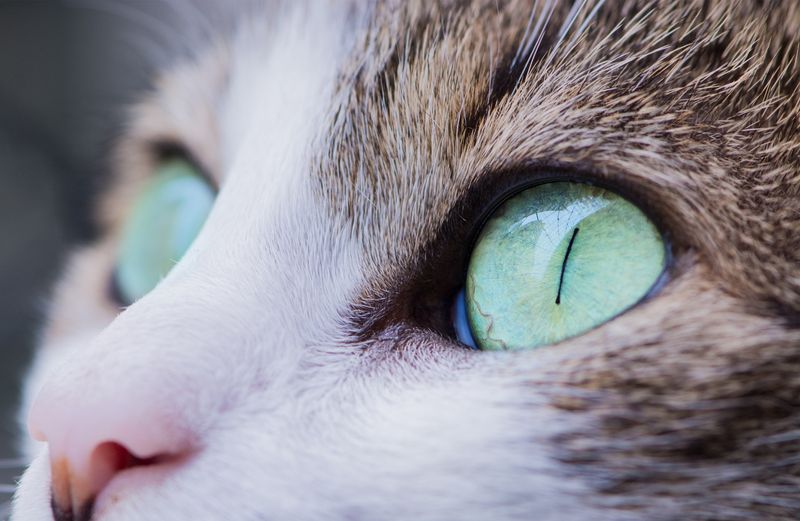
Visual perception in cats is a remarkable aspect of their sensory capabilities, supported by the brain’s sophisticated processing abilities. Cats have excellent vision, especially in low-light conditions, thanks to the unique structure of their eyes.
The feline brain integrates visual information, allowing them to detect movement and assess their environment with precision. Cats’ eyes are equipped with a high number of rod cells, which enhance their ability to see in dim light, a crucial adaptation for nocturnal hunting.
The tapetum lucidum, a reflective layer behind the retina, further amplifies available light, providing superior night vision. The brain processes these visual signals to create a detailed map of their surroundings, enabling quick and accurate responses to visual stimuli.
Visual perception is not only vital for hunting but also for everyday activities, such as navigating obstacles and interacting with other animals. The neural mechanisms underpinning visual perception are a testament to the evolutionary refinement of the feline brain, highlighting their prowess as adept hunters and agile companions.
16. Stress Response
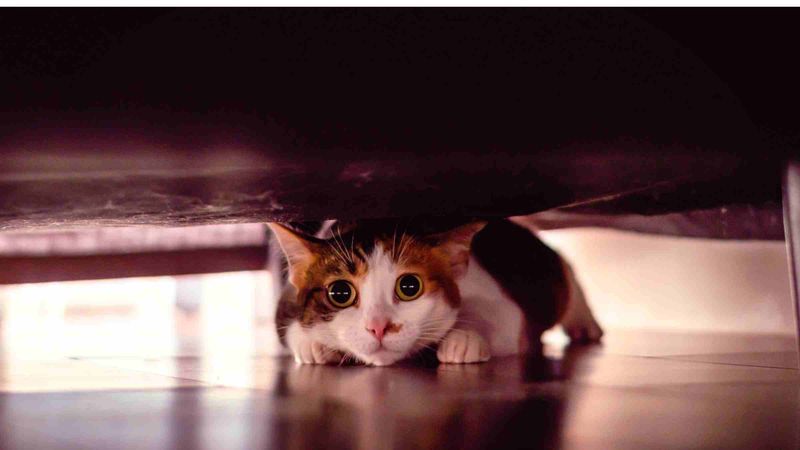
The stress response in cats is a complex interplay of physiological and neurological processes, managed by the brain’s sophisticated regulatory mechanisms. Cats, like humans, experience stress, and their brains are equipped to handle these challenges to maintain homeostasis.
When faced with a stressful situation, such as the presence of a new pet or changes in their routine, the feline brain activates the hypothalamic-pituitary-adrenal (HPA) axis. This triggers the release of stress hormones like cortisol, preparing the body to respond to perceived threats.
The brain’s role in modulating stress responses is critical for a cat’s well-being, enabling them to cope with environmental changes and potential threats. Stress can impact behavior, leading to changes in appetite, grooming habits, and social interactions.
Understanding the neural basis of stress responses in cats is essential for providing a supportive and stable environment, promoting their mental and physical health. This knowledge highlights the intricate balance maintained by the feline brain in managing stress and ensuring survival.
17. Learning Through Observation

Learning through observation is an intriguing aspect of feline intelligence, showcasing their ability to acquire knowledge without direct interaction. Cats are keen observers, often learning by watching other animals and humans. The brain’s capacity to process and store observed information enables cats to mimic behaviors and adapt them to their needs.
This form of learning is particularly evident when cats observe other cats or humans perform tasks, such as opening doors or accessing food. By witnessing these actions, cats can develop strategies to achieve similar outcomes, reflecting their problem-solving abilities and cognitive flexibility.
The neural basis of observational learning underscores the sophistication of the feline brain, highlighting their ability to process complex social and environmental cues.
This skill not only enhances their adaptability but also strengthens their bond with humans, as they learn to interpret and respond to human behaviors. Observational learning is a testament to the intelligence and curiosity of cats, emphasizing their capacity to thrive in dynamic environments.






